
- Read more about Supplementary Materials of FaceLiVT: Face Recognition using Linear Vision Transformer with Structural Reparameterization
- Log in to post comments
This paper presents FaceLiVT, a lightweight yet powerful face recognition model that combines a hybrid CNN- Transformer architecture with an innovative and lightweight Multi-Head Linear Attention (MHLA) mechanism. By incorporating MHLA alongside a reparameterized token mixer, FaceLiVT effectively reduces computational complexity while preserving high accuracy. Extensive evaluations on challenging benchmarks—including LFW, CFP-FP, AgeDB-30, IJB-B, and IJB-C—highlight its superior performance compared to state-of-the-art lightweight models.
- Categories:
 57 Views
57 Views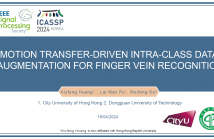
- Read more about MOTION TRANSFER-DRIVEN INTRA-CLASS DATA AUGMENTATION FOR FINGER VEIN RECOGNITION
- Log in to post comments
Finger vein recognition (FVR) has emerged as a secure biometric technique because of the confidentiality of vascular bio-information. Recently, deep learning-based FVR has gained increased popularity and achieved promising performance. However, the limited size of public vein datasets has caused overfitting issues and greatly limits the recognition performance.
- Categories:
 15 Views
15 Views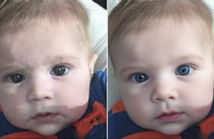
Presentation attacks on biometric systems have long created significant security risks. The increase in the adoption of age verification systems, which ensure that only age-appropriate content is consumed online, raises the question of vulnerability of such systems to replay presentation attacks. In this paper, we analyze the vulnerability of face age verification to simple replay attacks and assess whether presentation attack detection (PAD) systems created for biometrics can be effective at detecting similar attacks on age verification.
- Categories:
 27 Views
27 Views
- Read more about Improving Visual Quality and Transferability of Adversarial Attacks on Face Recognition Simultaneously with Adversarial Restoration
- Log in to post comments
Adversarial face examples possess two critical properties: Visual Quality and Transferability. However, existing approaches rarely address these properties simultaneously, leading to subpar results. To address this issue, we propose a novel adversarial attack technique known as Adversarial Restoration (AdvRestore), which enhances both visual quality and transferability of adversarial face examples by leveraging a face restoration prior. In our approach, we initially train a Restoration Latent Diffusion Model (RLDM) designed for face restoration.
slide.pptx
- Categories:
 19 Views
19 Views
- Read more about ENHANCING GENDER PRIVACY WITH PHOTO-REALISTIC FUSION OF DISENTANGLED SPATIAL SEGMENTS
- Log in to post comments
Soft-biometric privacy enhancing techniques (SB-PETs) transform facial images to preserve identity while preventing the automatic extraction of soft-biometrics by confusing machines through noise injections or attribute obfuscation. However, existing SB-PETs often sacrifice image quality for privacy enhancement, limiting practical usage, especially in applications that allow for human inspection.
- Categories:
 43 Views
43 Views
- Read more about GaitMM: Multi-Granularity Motion Sequence Learning for Gait Recognition
- Log in to post comments
Gait recognition aims to identify individual-specific walking patterns by observing the different periodic movements of each body part. However, most existing methods treat each part equally and fail to account for the data redundancy caused by the different step frequencies and sampling rates of gait sequences. In this study, we propose a multi-granularity motion representation network (GaitMM) for gait sequence learning. In GaitMM, we design a combined full-body and fine-grained sequence learning module (FFSL) to explore part-independent spatio-temporal representations.
- Categories:
 22 Views
22 Views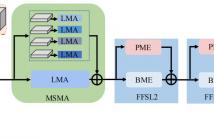
- Read more about GaitMM: Multi-Granularity Motion Sequence Learning for Gait Recognition
- Log in to post comments
Gait recognition aims to identify individual-specific walking patterns by observing the different periodic movements of each body part. However, most existing methods treat each part equally and fail to account for the data redundancy caused by the different step frequencies and sampling rates of gait sequences. In this study, we propose a multi-granularity motion representation network (GaitMM) for gait sequence learning. In GaitMM, we design a combined full-body and fine-grained sequence learning module (FFSL) to explore part-independent spatio-temporal representations.
- Categories:
 16 Views
16 Views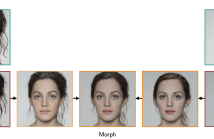
- Read more about Are GAN-based Morphs Threatening Face Recognition?
- Log in to post comments
Morphing attacks are a threat to biometric systems where the biometric reference in an identity document can be altered. This form of attack presents an important issue in applications relying on identity documents such as border security or access control. Research in generation of face morphs and their detection is developing rapidly, however very few datasets with morphing attacks and open-source detection toolkits are publicly available.
- Categories:
 30 Views
30 Views
- Read more about One-class Learning Towards Synthetic Voice Spoofing Detection (Poster)
- Log in to post comments
Human voices can be used to authenticate the identity of the speaker, but the automatic speaker verification (ASV) systems are vulnerable to voice spoofing attacks, such as impersonation, replay, text-to-speech, and voice conversion. Recently, researchers developed anti-spoofing techniques to improve the reliability of ASV systems against spoofing attacks. However, most methods encounter difficulties in detecting unknown attacks in practical use, which often have different statistical distributions from known attacks.
- Categories:
 46 Views
46 Views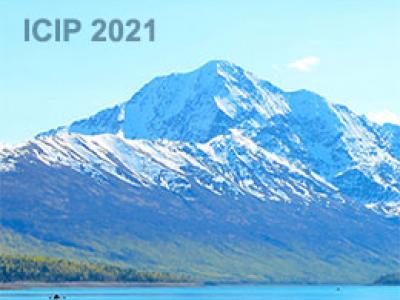
This work explores facial expression bias as a security vulnerability of face recognition systems. Despite the great performance achieved by state-of-the-art face recognition systems, the algorithms are still sensitive to a large range of covariates. We present a comprehensive analysis of how facial expression bias impacts the performance of face recognition technologies. Our study analyzes: i) facial expression biases in the most popular face recognition databases; and ii) the impact of facial expression in face recognition performances.
- Categories:
 26 Views
26 Views